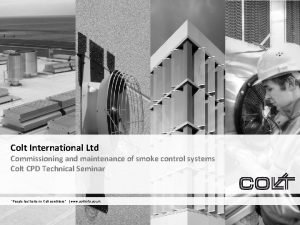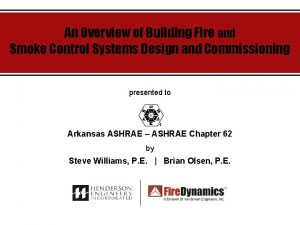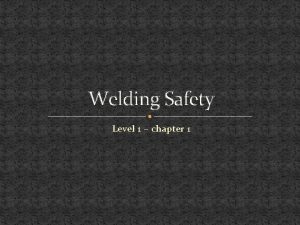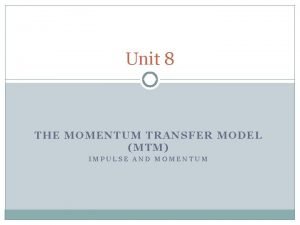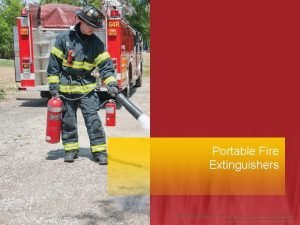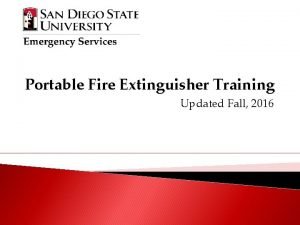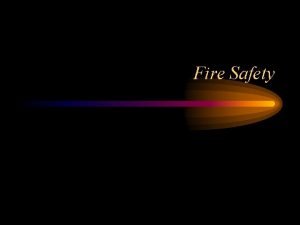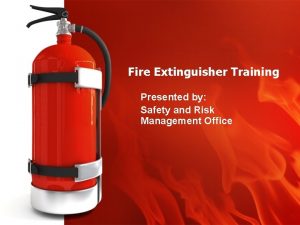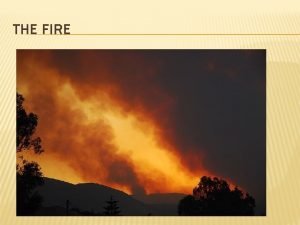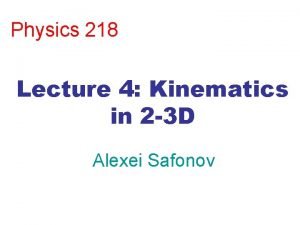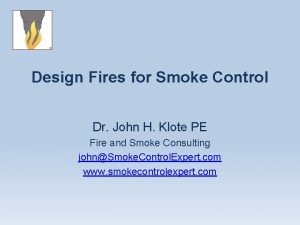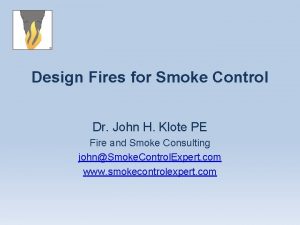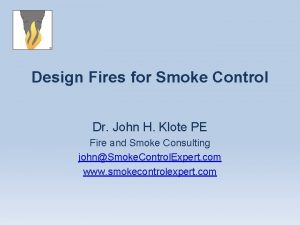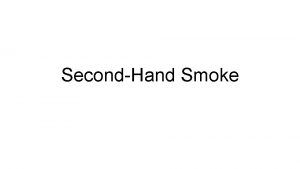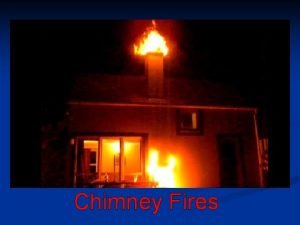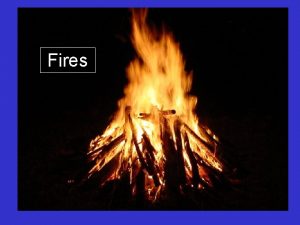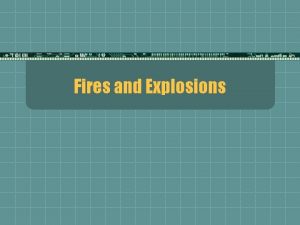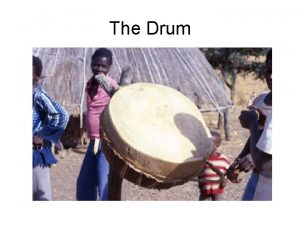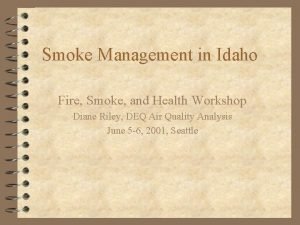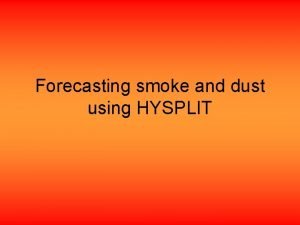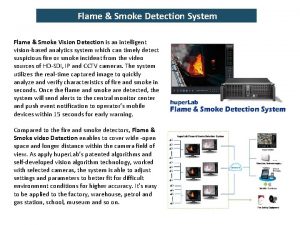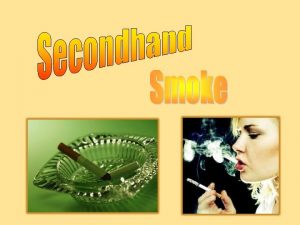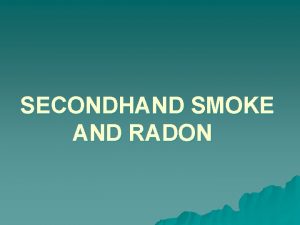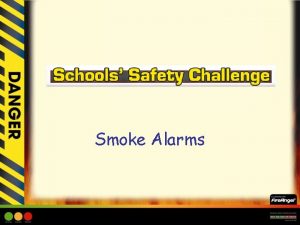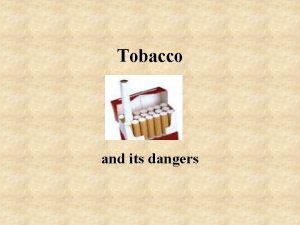Design Fires for Smoke Control Dr John H








































- Slides: 40

Design Fires for Smoke Control Dr. John H. Klote PE Fire and Smoke Consulting john@Smoke. Control. Expert. com www. smokecontrolexpert. com

Learning Objectives • Provide an understanding of fire growth, flashover, fully developed fire and fire decay. • Provide an overview of the basic concepts of developing design fires for smoke control systems.

• Extensive Treatment of All Aspects of Smoke Control • For more information about design fires, see Chapter 5 “Fire Physics & Design Fires”

Design Fires • Used for Atrium Smoke Control and Tenability Systems • IBC – No Prescribed Design Fires – Requires Analysis of Design Fires • Many Engineers – New to Design Fires • This Talk: – Overview of Analysis of Design Fires – Focus on Highlights

UK Information on Design Fires • Industrial & Warehouse (not high racked) -1990 Smoke Ventilation Association Guide: – Sprinklered Steady Fires - 3 m x 3 m to 9 m x 9 m. – Unsprinkleres Steady Fires – 2 Times as Big • Steady Fires in Car Parks – BS 7346 -7 • Guidance for Offices & Hotels – BS 7346 -4 and 5 and in BR 368 • General Information on Specific Objects: – BS 7974 (UK fire engineering standard) – BRE design fires database CD


Design Fires • Normally Most Important Property - Heat Release Rate (HRR) • Other Properties (toxic gases, reduced visibility, etc. ) - Tenability Systems • For simplicity - Only Discuss HRR • HRR of a Design Fire: – Steady – Unsteady • Steady HRR – Peak of Unsteady HRR









Fully Developed Fire • Called “Ventilation Controlled Fire” • Room with One Opening – HRR Controlled by Opening Size – HRR Equation

HRR Measurement • Oxygen Consumption Calorimeters – HRR per unit O 2 Consumed – Almost Constant (13. 1 MJ per kg of oxygen + 6%) – Open Air Calorimeter – Room Calorimeter







Design Fires • Normal Fuels - Objects Planned for Space • Transient Fuels - In a Space Temporarily – Examples: Trash, Stacked Wood Pallets, Furniture After Delivery, etc. • Atrium Fires – Normal & Transient Fuels – No Benefit of Sprinklers (Ceilings > 35 – 45 ft) – Transient Fuels: Suggest Min. 2000 Btu/s • Non-Atrium Fires – Normal & Transient Fuels – Fires w/ Axisymmetric Plume – CFAST – Shielded Fires (NIST & NRCC Models)
















Questions? Dr. John H. Klote PE john@Smoke. Control. Expert. com www. smokecontrolexpert. com
 Colt smoke vent
Colt smoke vent Rational analysis smoke control
Rational analysis smoke control Most welding environment fires occur during
Most welding environment fires occur during Momentum bar chart
Momentum bar chart The five classes of fire
The five classes of fire Class c fires
Class c fires Fire safety objectives
Fire safety objectives What is a class d fire extinguisher
What is a class d fire extinguisher 2007 greek forest fires
2007 greek forest fires Causes and effects of wildfires
Causes and effects of wildfires Marco koper
Marco koper Anthony mingella
Anthony mingella A destroyer simultaneously fires two shells
A destroyer simultaneously fires two shells Process design and control design should always be in
Process design and control design should always be in Kontinuitetshantering
Kontinuitetshantering Typiska novell drag
Typiska novell drag Tack för att ni lyssnade bild
Tack för att ni lyssnade bild Ekologiskt fotavtryck
Ekologiskt fotavtryck Shingelfrisyren
Shingelfrisyren En lathund för arbete med kontinuitetshantering
En lathund för arbete med kontinuitetshantering Särskild löneskatt för pensionskostnader
Särskild löneskatt för pensionskostnader Tidbok för yrkesförare
Tidbok för yrkesförare Sura för anatom
Sura för anatom Densitet vatten
Densitet vatten Datorkunskap för nybörjare
Datorkunskap för nybörjare Tack för att ni lyssnade bild
Tack för att ni lyssnade bild Debattartikel mall
Debattartikel mall Autokratiskt ledarskap
Autokratiskt ledarskap Nyckelkompetenser för livslångt lärande
Nyckelkompetenser för livslångt lärande Påbyggnader för flakfordon
Påbyggnader för flakfordon Lufttryck formel
Lufttryck formel Offentlig förvaltning
Offentlig förvaltning Jag har gått inunder stjärnor text
Jag har gått inunder stjärnor text Presentera för publik crossboss
Presentera för publik crossboss Teckenspråk minoritetsspråk argument
Teckenspråk minoritetsspråk argument Kanaans land
Kanaans land Klassificeringsstruktur för kommunala verksamheter
Klassificeringsstruktur för kommunala verksamheter Luftstrupen för medicinare
Luftstrupen för medicinare Bästa kameran för astrofoto
Bästa kameran för astrofoto Centrum för kunskap och säkerhet
Centrum för kunskap och säkerhet Byggprocessen steg för steg
Byggprocessen steg för steg
